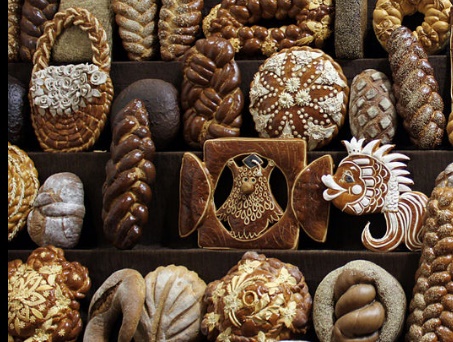|
Baked communally and at home, bread has the unique ability to be shared and decorated. When stored for a long time (in Sweden bread was originally baked only twice a year) it charmingly keeps its form and in theory can still be eaten. This has made bread ripe for interpretation; traces of breads made into shapes and having meanings have been found in grave sites dating from neolithic times.
Today, yeast breads are a key part of cuisine in the western hemisphere, and both leavened and unleavened forms are found everywhere. An impressive range of decorative and symbolic breads are well-loved fixtures in many ceremonies, rituals, and rites of passage throughout the year, adapting their forms to new fashions and technologies. |
|
|
|



